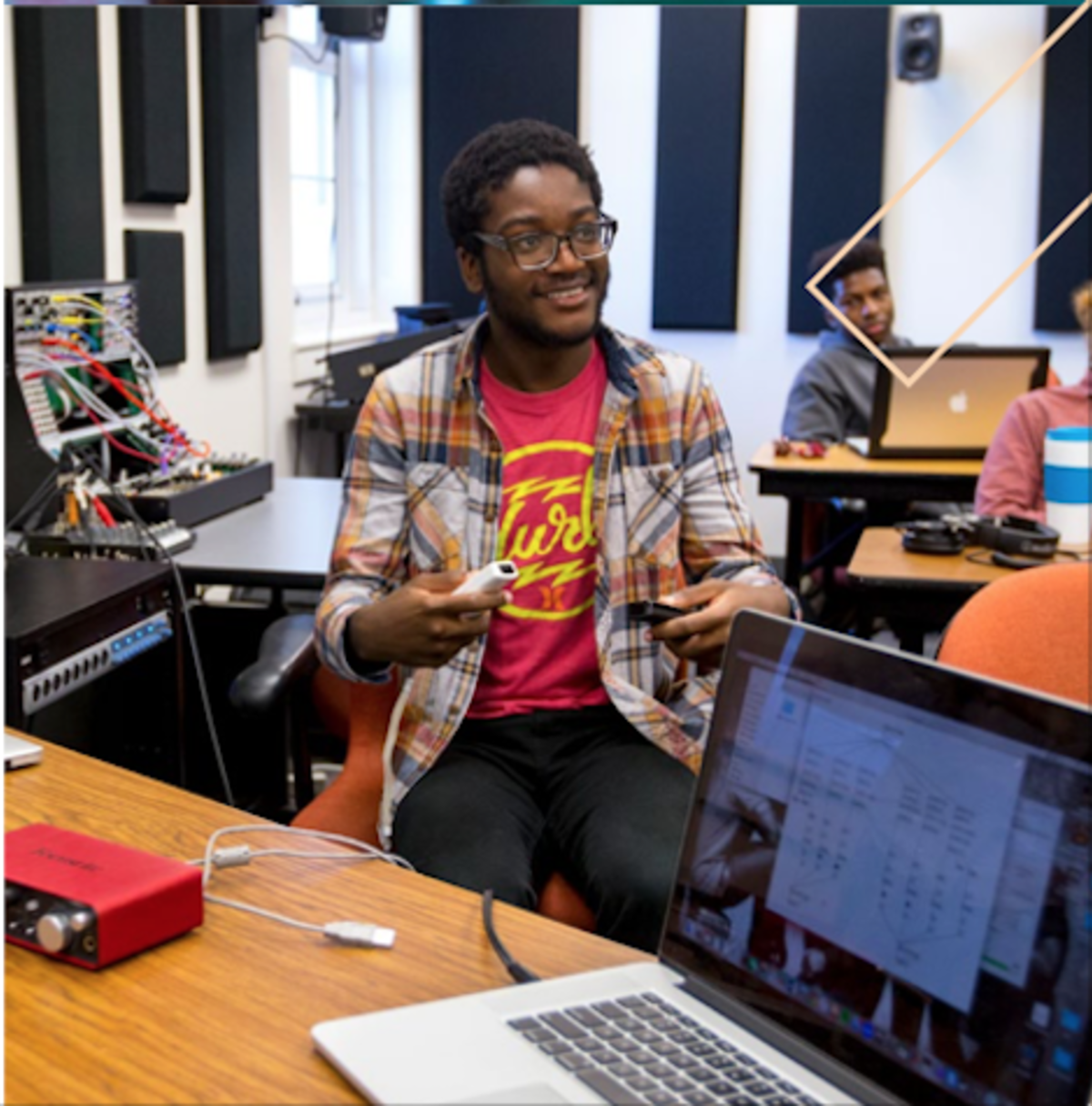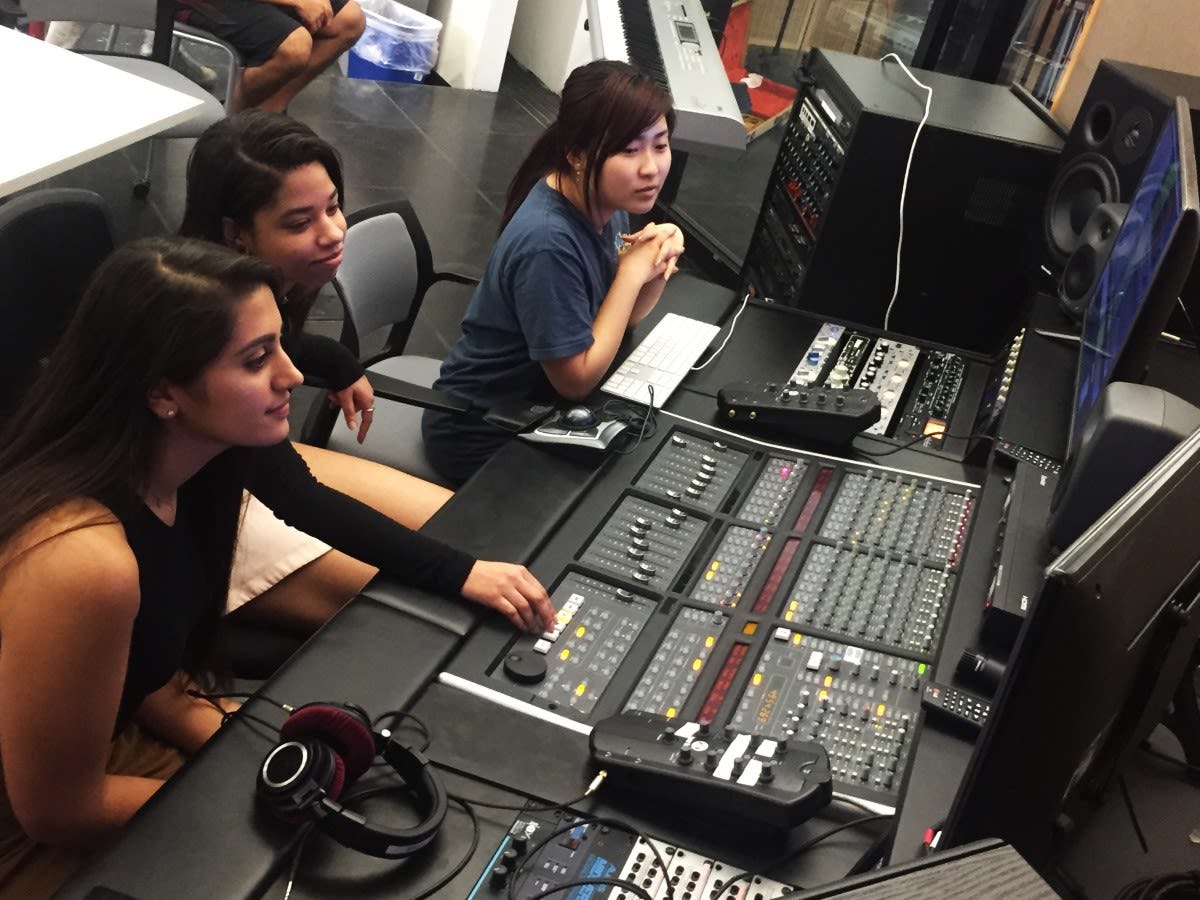Stevens Secures National Science Foundation Funding to Address Underrepresented Students in STEM
The National Science Foundation (NSF) has awarded $450,000 to Stevens Institute of Technology for a two-year exploratory Discovery Research PreK-12 project, with the goal of developing a high school multimedia curriculum to increase the interest and knowledge of science and engineering, especially for young women and groups historically underrepresented in STEM learning and careers.
The project will build upon the Stevens Music and Technology bachelor’s degree program and summer pre-college multimedia intensive program for high school juniors, utilizing multimedia production as a rich problem-solving context to promote students’ understanding of engineering design and relevant physics concepts.
Stevens faculty and staff at the Center for Innovation in Engineering and Science Education (CIESE) recently conducted a five-day orientation program for participating high school teachers from Hoboken, Union City, Weehawken, Paterson, Bayonne and Jersey City—neighboring schools that all serve ethnically and economically diverse students.
“This is a great example of the way Stevens' research and pedagogy impact our local community,” said Dr. Kelland Thomas, dean of the College of Arts and Letters at Stevens. “By inspiring future developers, designers, computer programmers, engineers and doctors, this project can help to ensure New Jersey’s and the nation’s technological future.”
Developing Students’ Positive Attitudes Towards Science
According to the NSF, women remain underrepresented in the science and engineering workforce, and several racial and ethnic minority groups continue to be significantly underrepresented as well. The Stevens Multimedia Immersion (MI) project ultimately hopes to pique underrepresented students’ interest in and use of music, technology and video to engage them in projects and topics that increase their science content knowledge and engagement level.
The project builds upon research that suggests a design-based learning approach enables students to transfer knowledge to another task, learn through collaboration, and develop positive attitudes towards science.
“These are kids who may not be interested in traditional math or science classes,” said Gail Baxter, who is a current co-director of CIESE, as well as the co-PI of this project. “But they know and love current music and video… they just don’t know that understanding of science and engineering are important aspects in the creation and production process.”
Industry associate professor Robert Harari, the PI on the project, has demonstrated this merger of technology and science with the arts at Stevens since he became a Music and Technology faculty member in 2005. In addition to a 34-year career in music, Harari has created and taught myriad courses in sound recording and design as well as the Stevens pre-college multimedia summer program. In that two-week program, high school juniors developed their own video or animation production, learning the physics of sound wave propagation, basic principles of 3D animation design through modeling, how to define problems and design solutions, and other STEM-rich concepts through an artistic and creative lens.
Coupled with CIESE’s nearly 30 years of experience at Stevens in STEM education at the K-12 level, the project’s conception blossomed into a stellar example of a holistic Stevens’ academic experience.
Baxter and fellow CIESE co-director and project co-PI Mercedes McKay have been focused on trying to strengthen STEM education and provide inspiration for students to pursue higher STEM education and careers, especially through CIESE’s strong relationships with NJ school districts who work with underserved populations.
“We’re planning to take what’s inside Professor Harari’s syllabus, mind and pedagogical style, and develop that into a set of lessons teachers can use for all high school students,” explained McKay, “and make sure it’s tailored to the resources that are readily available within NJ public schools.”
The teachers are introduced to the MI curricular sequence, and hands-on experiences and strategies for ensuring all students actively participate. In this condensed version of the Stevens multimedia course, particular attention will be paid to the relevant science content and engineering practices, as well as how to create a culture in the classroom in which all students participate and are engaged.
Several of those participating teachers will go on to work with the Stevens project team to develop and prepare curriculum materials that meet the content and practices required by the NJ Student Learning Standards for science, engineering and technology. Teachers will then implement the curricular activities in the classroom in the spring of 2018, and project staff will collect student and teacher data, and make revisions and final changes for a second iteration of the curriculum in the fall of 2018.
“This project is going to help students start to see a context for applying physics and engineering concepts,” said Harari. “They don’t have to just learn this content in a vacuum, they can learn it with an end product in mind that’s something they know and enjoy, like music or art. If they can see themselves being creative while doing science and engineering, it’s going to inspire them to aim for STEM-related careers.”



